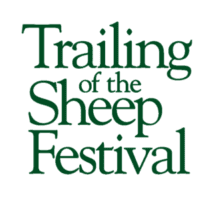History of the Festival
Sheep figures appear prominently in the history of man, providing him food and fiber for clothing. The story of sheep fills the pages of western Asia and European history. England and Spain were large producers in the middle ages and introduced the animals into the New World. Those in the western United States were brought in by the Spanish through South America and Mexico in the 16th and 17th centuries.
In the fall of 1996, the Peaveys invited people to meet for coffee at a local café and then help walk with the sheep through the Valley to learn about this historic tradition of trailing the sheep in an effort minimize conflicts between users of the bike path and the sheep. Along the way, they shared stories of the rich history, heritage and cultures of the Wood River Valley. It was small, informal and educational. People loved it.
In 1997, the Peaveys met with the local Sun Valley/Ketchum Chamber & Visitor Bureau (CVB) to discuss the idea of creating an event based on the sheep trailing. Seeing the potential to turn a conflict into a celebration of cultural heritage and a unique fall event to attract visitors, the CVB quickly jumped on board with support and the Trailing of the Sheep Festival was born. Working with the Peaveys, the CBV provided staff, ideas and the funding to create and promote a multi-day event that featured the Sheep Parade down Main Street in Ketchum, the Sheep Folklife Fair, Sheep Tales Storytelling, Lamb Dine-Around and other elements that remain an integral part of the Festival. The CVB, along with the Peaveys and a dedicated committee of volunteers, produced the event until 2003, when the non-profit Trailing of the Sheep Cultural Heritage Center was created to take over the reins and continue to develop the Festival into the future.
Celebrating its 29th year in 2025, the Festival has expanded greatly from its humble beginnings, yet the goals and objectives of the Festival remain the same—preserving the stories and history of sheep ranchers and herders, celebrating the rich cultures of the past and present, and entertaining and educating children and adults about the production of local food and fiber that have sustained local economies for generations.
The Festival has garnered some well-deserved accolades over the years, including being recognized as one of the Top Ten Fall Festivals in the World by msn.com travel, Top 7 Fall Festivals by National Geographic, Top Ten US Fall Festivals by smartertravel.com, Top Animal Festivals in the World and Top Ten Fall Festivals by USA Today, Top 7 Fun Fall Festivals by AARP, One of the Greatest Cultural Events in the West by Northwest Travel, and is a recipient of the Society of American Travel Writer’s Phoenix Award for best in cultural tourism as well as the Idaho Governor’s Award for Cultural Heritage.
The Festival is five days of nonstop family events including multicultural performers, storytelling, culinary events and cooking classes, a Wool Festival, Championship Sheepdog Trials and the Big Sheep Parade with 1,500 sheep trailing down Main Street in Ketchum, Idaho.
In 2024, the combined attendance at the five-day Festival topped 25,000 people coming from 46 states and multiple countries. The economic impact to the Valley during the Festival is nearly $7.6 million.
We invite you to join us for the Annual Trailing of the Sheep Festival - sheep, stories, music, food, hikes and history.
Source: Idaho Agricultural Statistic Service
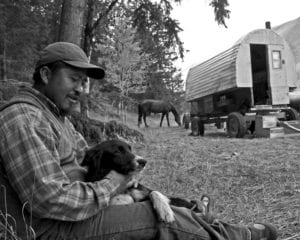
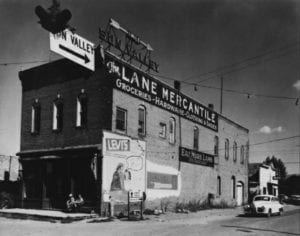
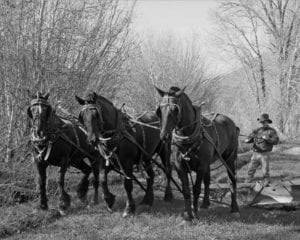
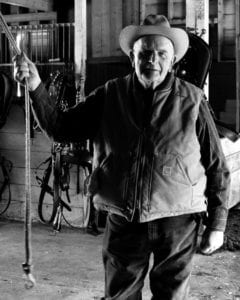
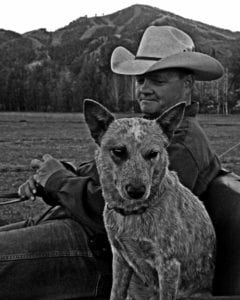
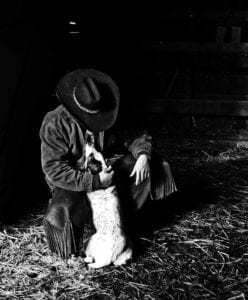
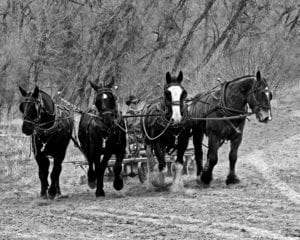
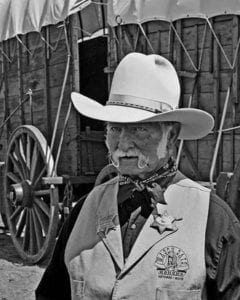
In the south west region of Idaho, it is said that John Hailey brought the first sheep into the Wood River Valley in the late 1860's. At that time, Idaho recorded a breeding sheep population of 14,000. As the mines began to play out in the Wood River Valley, the sheep industry filled an increasingly large role in the local economy. By 1890, there were a reported 614,000 sheep in Idaho. A 1905 newspaper photograph of a shearing plant in neighboring Picabo states that 95,000 sheep were sheared that week. In 1918, the sheep population reached 2.65 million*, almost six times the state's human population. (It was not until the 1970 census, after a large decline in the sheep industry and an influx of new residents, that human numbers finally exceed sheep in Idaho - 700,000 to 687,000.)
During this time, thousands of lambs were shipped by railroad from Hill City, Fairfield, Picabo, Bellevue, Hailey and Ketchum to markets around the west. As a major sheep center, Ketchum was second only to Sydney, Australia.
When Sun Valley was opening its winter ski resort in 1936, sheepman Jack Lane was holding forth at his general store in Ketchum. It served as the sheep center where ranchers congregated to swap stories about prices and weather. Today, the building is still located at the corner of Main Street and Sun Valley Road and houses Enoteca, a fine dining restaurant.
During the depression, when lamb prices plummeted, Lane was one of the few who extended credit to the sheepmen. It took some men four or five years to pay off their debts but Lane stuck by them. Of this famous gathering place Jack Lane's son Pete recalled, "They had telegrams come in daily with different livestock prices from Omaha, Chicago, Sioux City, Saint Joe, Kansas City and later on Denver and Ogden. It was a whole life of fraternity...there was tremendous competition -- not so much for the price you got, but the weight of your lambs and how good they looked. It was a real pride in doing business."
In this region of Idaho, the Scots, men like James Laidlaw, were among the first to settle into the sheep business successfully. Laidlaw arrived in the region with only the clothes he wore. He worked as a herder and took his pay in sheep. When he had gathered enough animals, he started his own operation in the Muldoon area bringing in relatives and friends from Scotland to homestead and to work with him. He went on to distinguish himself developing some of the finest lambs in the state including the Panama breed, which he created crossing a Lincoln ewe and Rambouillet buck. He is credited with bringing the first Suffolk sheep into Idaho. Today, the headquarters of the Laidlaw ranch has been incorporated into Flat Top Sheep Company, sheep outfit started by John Thomas (later U.S. Senator) in the 1920's. Today it is run by the third and fourth generation of Thomas' family, John and Tom Peavey.
In addition to the Scottish influence, the role of the Basques in the sheep industry was critical to its success. They began to arrive in the U.S. from their homeland in northern Spain in the mid-1850. They came in response to the gold rush but soon they began migrating around the west finding jobs as sheepherders. Their hard work and dependability made it possible for sheep operators to leave large numbers of sheep in lonely and remote mountain pastures in their attentive care. Many Basques stayed on in this country often beginning their own sheep operations - the Cenarrusas, Etcheverrys, Guerrys and Oxarangos among the others. Today, most Idaho herders are Peruvian. There are some Mexican, Chilean, and several Mongolian men as well
In 1997, the Wood River Valley began this proud tradition of honoring the history and heritage of sheep ranching in the region.
The Wood River Valley and the West were experiencing tremendous growth. Farms, ranches and open spaces were being lost to development at an alarming rate and economic losses were forcing families off the land.
“I was working on the Wood River Trail System, a paved Class I trail system, to connect all the communities in the Wood River Valley, explains former Executive Director of the Trailing of the Sheep Festival, Mary Austin Crofts. “When we needed some missing pieces of right of way to connect the Trail, I went to the local sheep ranchers to ask if they would agree to allow use of some of the sheep driveway that was dedicated in the early 1900s so sheep could move from southern Idaho through the Valley to summer grazing in the mountains. They graciously agreed,” Mary continued.
“But, after those sections of the trail were paved and the sheep came trailing through as they had done for 150 years, if you’ll pardon the expression, all hell broke loose. It was then that local sheep ranchers, Diane and John Peavey, decided it was time to tell the growing community of newcomers in the Wood River Valley about the place they had moved,” she added.
Visionaries
WE EXPRESS OUR DEEP GRATITUDE TO THOSE WHO HELPED FORM THE VISION FOR THE FESTIVAL AND PARTICIPATED IN ITS FOUNDING. WITH SINCERE THANKS TO THEM ALL!
THE BELIEVERS - FESTIVAL FOUNDERS AND SUPPORTERS
Anne Reed Gallery - Barbi Reed
Basque Advisors – Patty Miller, Boise Basque Museum, Rose Mallory and Mary Louise McGonigal
Biskay Land and Livestock - The Cenarussa Family
Blaine County Historical Museum - Ivan Swaner and Teddie Daley
Blaine County Recreation District - Shelly Preston
College of Southern Idaho Outreach Center Blaine County - Joan Davies
John DePasquale - Blaine County Teacher
Faulkner Land and Livestock - The Faulkner Family
Flat Top Sheep Co. - The Peavey Family
Hailey Chamber of Commerce - Sallie Hanson
Hailey Public Library
Hillside Ranch - Elizabeth and John Stevenson
Idaho Commission on the Arts
Idaho Humanities Council
Idaho Mountain Express
Idaho Rangeland Resources Commission – Gretchen Hyde
Idaho Wool Growers Association - Stan Boyd
Ketchum/Sun Valley Chamber and Visitors Bureau - Carol Waller, Carrie Westergard and Mary Fauth
Ruth Lieder - Volunteers
Picabo Livestock - Bud and Nick Purdy
Power Engineers - Tom Hanson
St. Charles Catholic Church
St. Thomas Episcopal Church - Rev. Brian Baker, Dick and Billie Brown
The Community Library - Wendy Warren
Uranga and Associates/Lasaii Benefits - Alberto Uranga
Western Folklife Center, Elko Nevada - Meg Glaser and Deb Fant
THE BELIEVERS - ARTISTS/PRESENTERS
John Balderson – Sheep Shearer
Boise Scottish Highlanders
Boulder Brothers - Celtic Tunes
Hal Cannon - Music and Teresa Jordan - Author
Chefs - Keith and Paula Perry, Scott Mason and Family, Chris and Rebecca Kastner, Tom Nickel, Cristiana, Alan Laudert
Gaupasa Musicians
Sam Jackson - Poet
Cook, Callie and Maeme Rasberry
Tish Lewis - Border Collie Demonstrations
Oinkari Basque Dancers and Musicians
Peruvian Musicians and Dancers
Polish Highlanders
Michele Schwartz - Photographer
Sheep Dog Trials’ Founders
Storytellers - Sheep Ranching Families Tell Their Lives and Histories
Ed Wilde - Sheep Shearer
Angel Winn - Filmmaker
FESTIVAL EXECUTIVE DIRECTORS (IN ORDER SERVED)
Diane Peavey, Flat Top Sheep Co.
Carol Waller/Mary Fauth SV-Ketchum Chamber/Visitors Bureau
Heather LaMonica Deckard
Linnea Collins
Mary Austin Crofts
Laura Musbach Drake (Current Director 2024)
FESTIVAL BOARD CHAIRS (IN ORDER SERVED)
Joan Davies
Cheryl Bennett
Dick Springs
John Peavey
Jerry Seiffert (Current Chair 2024)
